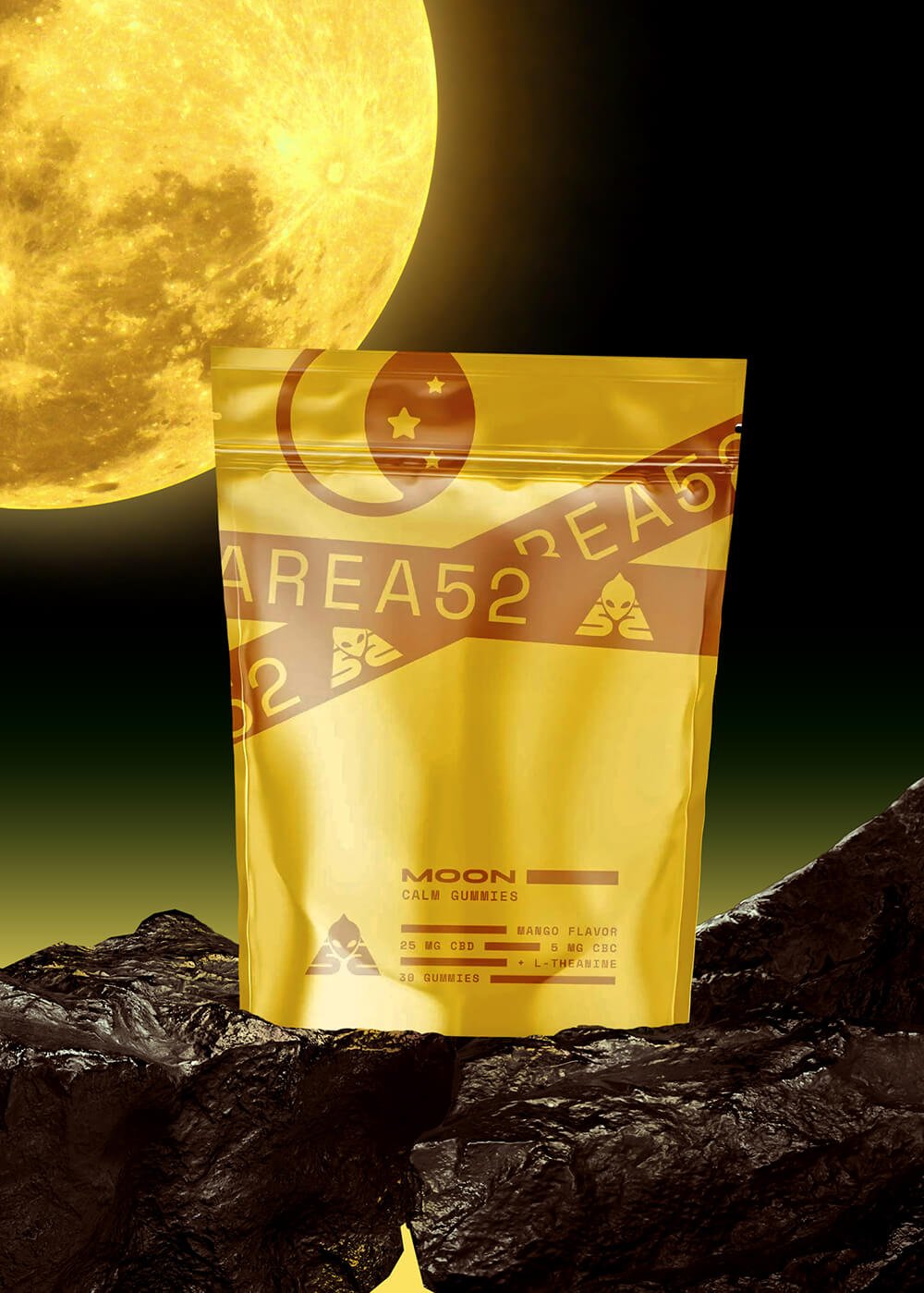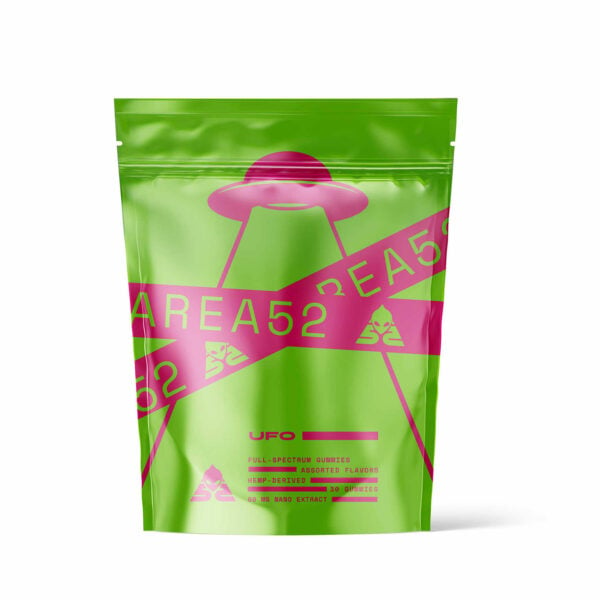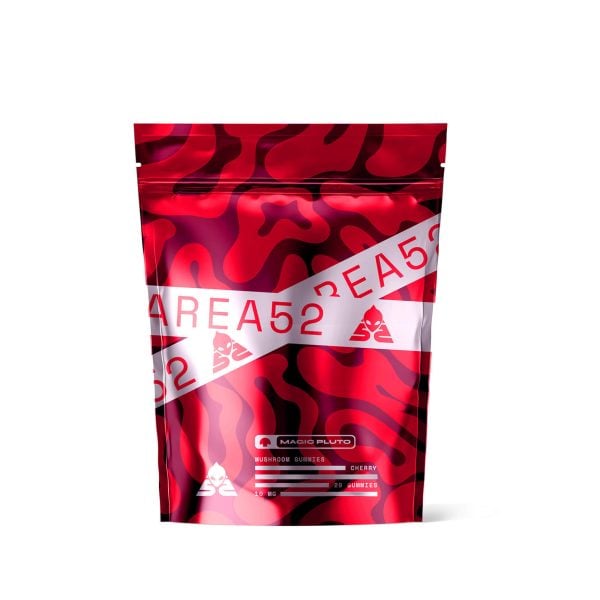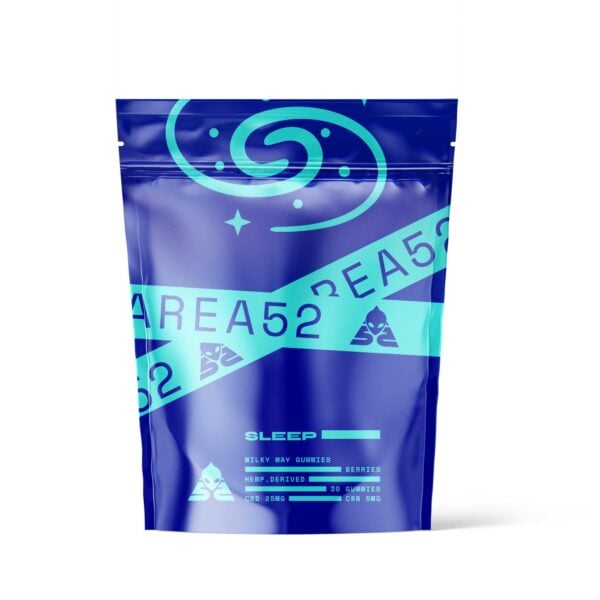What Color is Delta 8 THC Distillate Supposed to Be?

If you’ve ever poured clear corn syrup into a bowl, you know what perfect delta 8 THC looks like.
It looks pristine, inviting even — we’ve heard people say they want to dive into it and swim around.
While we don’t endorse that, we do appreciate a nice clear, syrupy extract.
That said, delta 8 color can sometimes lean toward a pink distillate hue, light amber, or a more gold color. Contrary to popular belief, a bit of color doesn’t automatically mean lower purity levels or that the product is unsafe.
Let’s explore why these colors vary, what each shade might signify, and how you can confirm you’re getting the purest form of delta 8 THC.
Typical Colors of Delta 8 Oil & What They Mean
There’s a surprising variability in the color of delta 8 products — regardless of purity. Here’s a quick breakdown of what each color represents:
Clear (No Color)
This is a highly-prized product — it means the product has been created without any oxidation (not easy to achieve) or has very minimally oxidized terpenes and other compounds. It doesn’t mean the extract is entirely pure, though — certain ingredients, such as solvents or leftover acids, can still be present after the distillation process without affecting the color.
While aesthetically superior, clear delta 8 isn’t necessarily any better than delta 8 distillate with a pink or amber hue. All it means is the extract has not had an opportunity to oxidize.
One of the simplest methods of producing delta 8 THC is to reflux the extract with bentonite clay. This method is cheap and can still lead to contamination in the final product, producing clear extract.
There’s a lot of confusion going around about clear delta 8 — let’s clear some of this up:
- Clear delta 8 looks great but doesn’t prove the extract is either good or bad — third-party tests remain the single best way to determine the quality and purity levels.
- Clear delta 8 has not been “bleached” —a common method of making it is to use bleaching bentonite, which is a term for bentonite clay, not actual bleach (it’s perfectly inert)
Slight Pink Hue
Most delta 8 THC extracts have a pinkish color to them. This isn’t a cause for alarm — all it means is that the extract has been at least partially oxidized. This is a process that happens naturally over time, so it could be that the extract is already a few months old or the extract was made through an older method of production.
Changes in the pH and refluxing can both cause the extract to turn pink.
Amber Hue
An amber hue usually forms when the pH is too high before distillation. This means some of the acids weren’t fully neutralized at the time of distillation.
This ultimately impacts the product’s final quality because any remaining acid is removed during the fractional distillation or thin film distillation process. However, once the amber color is created, it can’t be removed.
Amber hues are also more common in extracts that have been enriched with terpenes.
Terpenes have various benefits, and their presence can enhance or mitigate some of the effects of delta 8. For instance, if you want to sleep better, you could try delta 8 with myrcene, caryophyllene, linalool, or other terpenes thought to support sleep.
Some blends also offer CBD and CBG, giving an amber tint. It’s not harmful; some prefer it for a more “natural” look and a balanced experience.
Dark or Cloudy Delta 8
Avoid delta 8 that is dark or cloudy — this is a good sign your extract is either contaminated or nearing its expiration date.
There’s no reason why your delta 8 THC should be dark or hazy if it’s pure and made using current extraction methods.
Why Delta 8 THC Can Have Different Colors
Delta 8 THC is a legal alternative to delta 9, but it still has to undergo a distillation process after an extraction method from the hemp plant. The color can also vary depending on the temperature, direct sunlight exposure, and extreme temperatures during storage can change the color. Oxidation, leftover acids, or other cannabinoids like CBG and CBD also impact hue.
Oxidized terpenes are also another factor, giving the product a certain gold color or pink distillate hue. While aesthetics might look appealing, the genuine indicator of quality is third-party lab testing.
What Does Delta 8 Taste Like, & Does the Color Change It?
Delta 8 doesn’t taste bad, but it’s not particularly good either. Realistically, it’s pretty tasteless — perhaps with a slight bitterness on the tip of the tongue.
The flavor and aroma come from terpenes, and since these are removed during the process, the taste is mild. This is why most companies add terpenes back into the final product to restore the natural hemp flavor of the extract.
Clear, pink, and amber delta 8 THC will taste the same as long as they’re pure extracts. Amber-colored extracts may owe their color to the presence of terpenes, CBD, or CBG, which will have an impact on the flavor.
Discontinue use if your delta 8 product, whether it be an edible or cart, changes color or tastes and smells “off.” Products should have an expiration date, and while old delta 8 won’t make you sick, many additives could. Plus, it loses potency over time.
How is Delta 8 Made?
First, understand that delta 8 is nothing new. In the peer-reviewed organic chemistry research journal Tetrahedron, the process has been around since the mid-1960s.
Although delta 8 comes from cannabis plants, there isn’t enough of it to get an ant high.
So rather than extract delta 8, it must be isomerized from another cannabinoid — namely CBD. To stay in compliance with the Farm Bill of 2018, companies only use CBD from hemp (plants with less than 0.3% THC). Delta 8 extracts must also have less than 0.3% delta 9 in the final product.
Learn more: How is Delta 8 THC Made?
Here’s a basic outline of what happens in an extraction lab:
1. Combine Precursor With A Solvent
The first step? Dissolve the starting material in an organic solvent. The solution needs to be in liquid form to work, and hemp resin is notoriously thick and sticky. The solvent thins it out and allows everything to mix more effectively.
2. Optimize For Isomerization Conditions
Creating delta 8 requires just one reaction. This reaction occurs naturally, but through the help of a lab, manufacturers can optimize the conditions to get a near-perfect conversion.
Steam distillation process is sometimes used, but more commonly, specialized chemical transformations are undertaken.
To create these conditions, we need to decrease the pH of the solution and increase the heat. Now, we wait a couple of hours for the process to complete.
3. Neutralization & Wash
After the chemical reaction takes place, it’s time to remove the solvents and acids. It takes sodium bicarbonate, or a similar product with a high pH, to destroy the acids.
This is where it gets tricky. An otherwise safe product becomes hazardous if these are not removed well enough (it will never be 100%).
For example, acetic acid is commonly used for this and is dangerous to inhale.
Solvents are also harmful if they aren’t removed entirely from the final product. This can require some skill on behalf of the chemist performing the reaction and some high-tech (and expensive) lab equipment.
4. Testing, Testing, Testing
Once the product is ready, the company must test for purity and potency. A third-party test called a Certificate of Analysis (COA) should always be available to the customer to prove quality.
Of course, not all companies order third-party testing. It’s expensive and sometimes produces results company operators don’t want to hear. But this is the whole point — not all batches of delta 8 THC are safe. Only a lab test can differentiate bad delta 8 from good delta 8.
This is why you should always look for third-party lab tests before you buy.
Delta 8 THC Myths
Color isn’t the only cause of confusion when it comes to delta 8; here are two top concerns tied to color.
Myth #1: Delta 8 THC is Made With Bleach
This is a common myth in the delta 8 space. It started when a delta 8 brand (we won’t mention any names) started pointing fingers at any companies selling clear delta 8. Clear products are almost always considered purer (even though, technically, they’re not). This company started suggesting clear delta 8 was only possible by bleaching the extract — effectively contaminating it with highly toxic compounds.
This concept caught on, and there’s been a lot of talk around companies “bleaching” their delta 8 products to make them look better.
As we’ve covered earlier, this was taken out of context. Clear delta 8 can be made with many different techniques, but one of the most common is bleaching bentonite (AKA bentonite clay).
Bleaching bentonite is not bleach.
Bentonite is described as “bleaching” not because it contains bleach but because it has certain characteristics that allow it to bind and remove color particles. The result looks like something was bleached, but no nasty chemicals are needed to achieve these results.
Bentonite clay is entirely inert — it’s the same stuff found in mud or clay masks for home skincare treatments.
Myth #2: Delta 8 THC is Unsafe Because It’s Synthetic
This ties in with the first myth; many people are concerned that ‘synthetic’ automatically means ‘bleached’ or ‘unnatural,’ and therefore bad for your health.
However, it’s also the root and stem of current crusades against delta 8. Some states claim it’s illegal because it’s synthetically derived from CBD or hemp.
There’s a particular process to extract delta 8, but it’s not a synthetic product. It naturally occurs in cannabis without any human intervention. The process for making delta 8 THC relies on optimizing the conditions for this conversion to take place.
This is a far cry from what a true synthetic cannabinoid is. Non-classical synthetic cannabinoids used to be sold in headshops under names like Spice or K2. These compounds proved to be addictive and highly toxic, leading to the banning of synthetic derivatives.
Delta 8 is something entirely different. It shares the same shape as delta 9 THC (which we know unequivocally as safe) aside from a slight position change in one of the double bonds in the chemical structure.
In fact, because it’s so similar to delta 9, it’s safe to assume it offers the same health benefits and safety profile.
Learn more: Is Delta 8 THC Safe?
Should You Choose Clear Delta 8 Extract?

Whether you go with clear, pink, or lightly amber-tinted products doesn’t make much of a difference. The important part is that you check the third-party lab tests instead of relying on assessing the quality by the color of the extract.
With that said, always steer clear of expired, darkly colored, or cloudy distillates. Also, avoid anything that smells or tastes “odd” or chemically.
Where to Find High-Quality Delta 8 THC
Honestly, there are many poor products out there, and it’s easy to get swindled. When you’re looking for reliable, good delta 8 THC vendors, look for these things:
- Pure products with valid certificates of analysis clearly linked
- Safe extraction method protocols, like supercritical CO2
- Extracts that contain added (natural) terpenes
- Companies with a good reputation (lots of positive reviews & transparency)
If you’re looking for the best delta 8 vape cartridges, we carry three strain-based flavors:
- Pineapple Express (Sativa)
- Granddaddy Purple (Indica)
- Berry Gelato (hybrid)
All our products are federally compliant — containing less than the federal limit of 0.3% delta 9 THC and made from industrial hemp.
Frequently Asked Questions
1. Is Delta 8 Supposed to Be Clear?
Not necessarily. While many extracts appear to have clear-looking carrier oils, pink distillate or light amber hues are common. It’s safe as long as you confirm purity levels with lab tests.
2. What Happens When Delta 8 Gets Old?
Over time, delta 8 can lose potency and potentially darken, similar to oxidized terpenes. If it’s past the expiration date or stored improperly in extreme temperatures, it might taste off. Discard if it seems drastically changed.
3. What Is the Difference Between Clear & Amber Delta 8 Distillate?
Clear distillate indicates less oxidation; amber or gold color might suggest other cannabinoids or partial oxidation. Both can still be good since color alone doesn’t confirm safety or potency.
4. What Are the Three Types of Delta 8?
Typically, you’ll find delta 8 in pink distillate, light/clear distillate, or amber variants. These forms reflect how the distillation process or isomerization conditions differ, not a fundamental chemical difference.
5. How Can You Tell If a Cart Is High Quality?
Look for a vape pen cart that’s transparent about its distillation process and lab testing. A minimal color shift (clear to light gold) is normal, but muddy or dark tones can be sketchy. Always verify if the brand offers updated COAs with every batch.
Reference List
- Sommano, S. R., Chittasupho, C., Ruksiriwanich, W., & Jantrawut, P. (2020). The Cannabis Terpenes. Molecules, 25(24), 5792. [1]
- Ferber, S. G., Namdar, D., Hen-Shoval, D., Eger, G., Koltai, H., Shoval, G., … & Weller, A. (2020). The “entourage effect”: terpenes coupled with cannabinoids to treat mood disorders and anxiety disorders. Current Neuropharmacology, 18(2), 87-96. [2]
- Hollister, L. E., & Gillespie, H. K. (1973). Delta‐8‐and delta‐9‐tetrahydrocannabinol; Comparison in man by oral and intravenous administration. Clinical Pharmacology & Therapeutics, 14(3), 353-357. [3]
- Carlini, E. A. (2004). The good and the bad effects of (−) trans-delta-9-tetrahydrocannabinol (Δ9-THC) on humans. Toxicon, 44(4), 461-467. [4]
